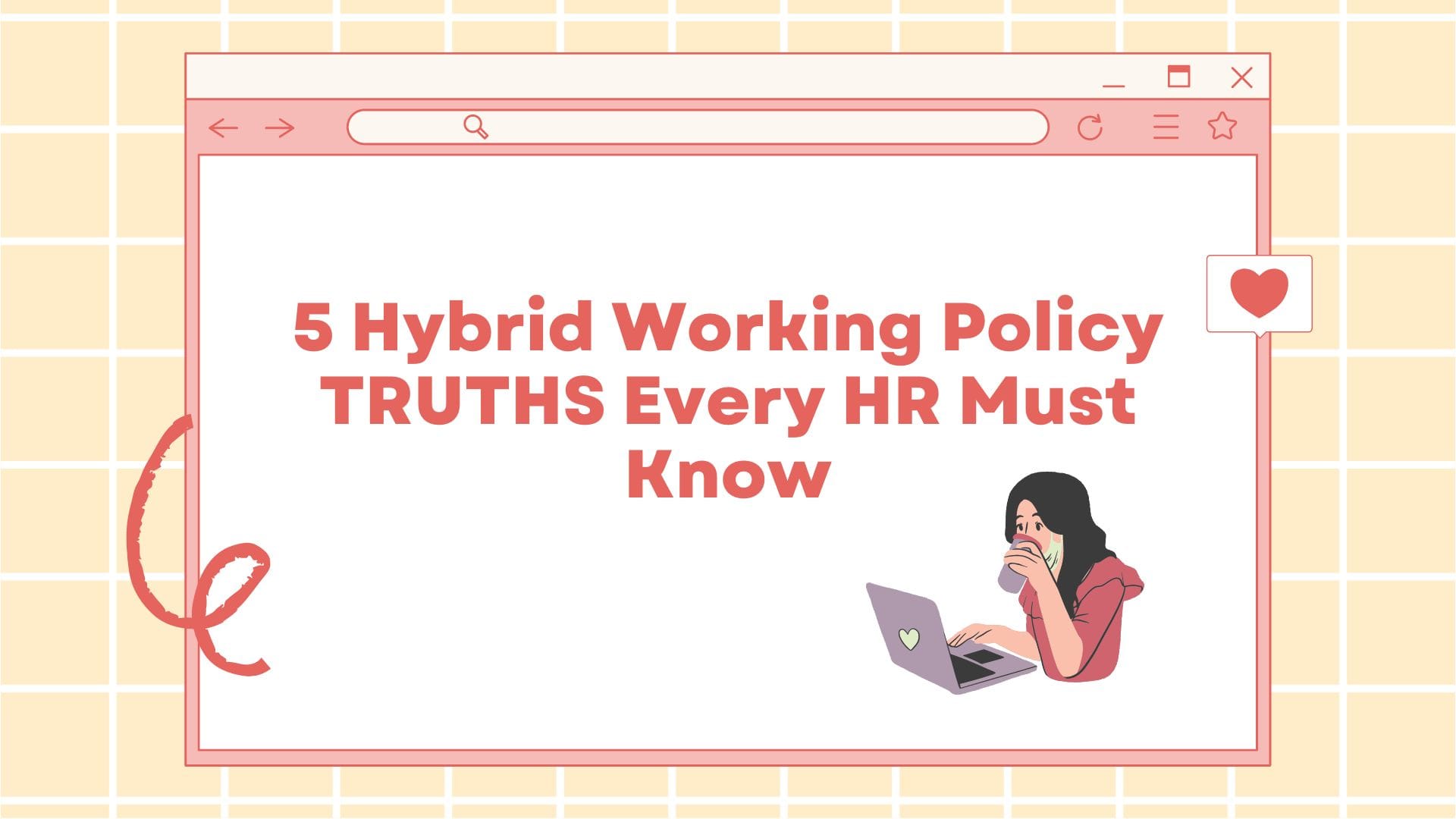5 Hybrid Working Policy TRUTHS Every HR Must Know

The way we work has undergone a drastic change post-pandemic. It was easier to build HR policies about work, office infrastructure, compensation, leave structure, and so on, pre-covid. Due to the simple fact that everyone came to the office for work.
But that’s not the case anymore! Hybrid working has arrived and it is here to stay. What can you do to improve your Hybrid Working Policy
In this blog, we are going to share –
- Is “Hybrid Working” Really The Future of Work?
- What Is Hybrid Working?
- Why Do You Need To Have A Strong Hybrid Working Policy?
- What Are The Cornerstones For Creating A Hybrid Working Policy?
Is “Hybrid Working” Really The Future of Work?
Post-pandemic companies are now contemplating switching to a hybrid working style to combine the best of both worlds. According to various credible sources like PWC and Accenture, employees prefer a hybrid working model over the traditional work model.
In fact, the survey undertaken by Accenture revealed that 83% of employees preferred the hybrid working style and 63% of the high-growth companies in the USA had already adopted the hybrid working model.
What Is Hybrid Working?
Hybrid working is a flexible work model that gives employees the freedom to choose between working from home or office or both alternatingly. Hybrid working is also referred to as blended working or flexible working.
CHROs (Chief Human Resources Officer) have been pushing for a “People First” agenda and hybrid working is the perfect example of this idea. It gives employees the power to choose where and when they can be most productive.
The major components of flexible working are:
- Work location – work from home or work from office
- Timings – flexible hours or options between different working hours
Why Do You Need To Have A Strong Hybrid Working Policy?
- To define the rules and structure of this hybrid work style for all stakeholders involved.
- To improve transparency and accountability in remote working environments.
- To empower the employees to make the choice that suits them better.
- To offer employees a fantastic work-life balance that enhances their quality of life even outside of work.
- To give clarity to both the company and the employees of how the company will function under a mix work from home and work from office model.
What Are The Cornerstones For Creating A Hybrid Working Policy?
Post-pandemic HR teams have been entrusted with the huge responsibility of creating a Hybrid Working policy that will be sustainable and boost the productivity of the employees.
The best approach to building a foolproof policy is to ask the question “what are the problems we intend to solve with this?”. These problems could be both actual and hypothetical ones that arise once the switch is made.
When we started building Tobu, an email resume extraction platform, we asked, “what is the biggest problem that recruiters and talent acquisition professionals face?”. We realized that their biggest problem was having to manually extract, sort and input thousands of candidate resumes into their CRM.
So we built an AI-powered email resume extraction system, that directly extracted resumes from the inbox, completed resume parsing, and built a candidate database for the recruiter automatically. Check out how Tobu works with our Video Demo.
Similarly, the cornerstone for designing a hybrid working policy should answer the following questions:
- Are you an office first or remote first company?
An office-first company will focus on having employees come to the office more often (minimum 3 days a week). On the other hand, a remote-first company will focus on setting up more infrastructure to support remote working (better cyber security, more devices etc.).
- How flexible are your working hours going to be?
In a bid to create a better work-life balance, companies are now offering full flexibility in working hours. But you must check what suits your company – having full flexibility or some flexibility within set boundaries. For example – employees must be logged in from 10 AM to 3 PM every day and the rest of the working hours are flexible.
- Who is entitled to hybrid working?
In a large organization, it may not be possible to offer all the employees hybrid working. Or in some cases, certain jobs require the employee to come to the workplace every day. As the HR it is your job to define which employee will be entitled to hybrid working in the company.
- How does flexible working affect leaves, employee benefits, and salary?
Ideally, there should not be a sea change in the leaves, employee benefits, or salaries of the employees due to a change in the work style. However, in case the management has made certain amendments then the HR team must put them in the hybrid policy working document.
Final Thoughts
There are many other factors that will be specific to the company and its needs, the HR team should take them into account when building the hybrid working policy. It is important to design a blended working policy that is tailormade to the company’s existing work culture and in line with the goals of the company.